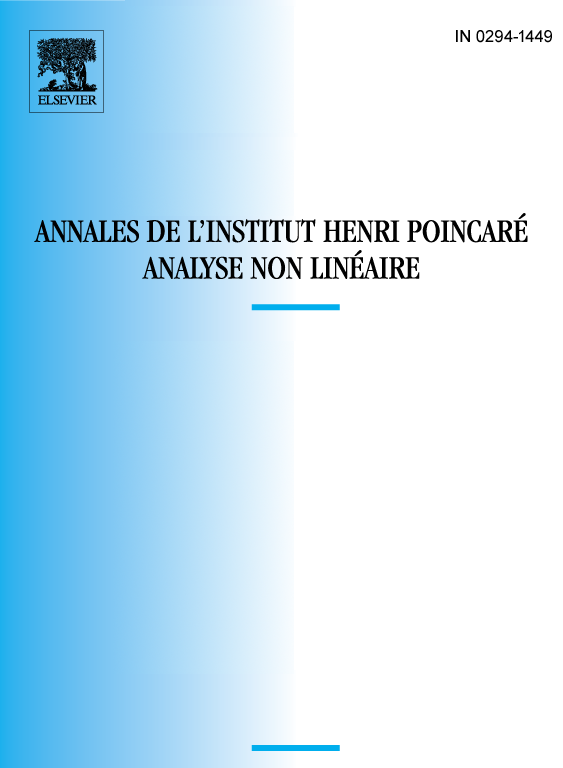Long-time behavior of solutions to a class of quasilinear parabolic equations with random coefficients
Igor D. Chueshov
Department of Mechanics and Mathematics, Kharkov State University, 4 Svobody Square, Kharkov, 310077 UkrainePierre-A. Vuillermot
Département de Mathématiques et UMR-CNRS 9973, Université Henri-Poincaré, Nancy-I, B.P. 239, 54506 Vandoeuvre-lès-Nancy Cedex France

Abstract
In this article we prove new results concerning the long-time behavior of random fields that are almost surely solutions to a class of stochastic parabolic Neumann problems defined on open bounded connected subsets of . Under appropriate ellipticity and regularity hypotheses, we first prove that every such random field stabilizes almost surely in a suitable topology around a spatially homogeneous random process whose statistical properties are entirely determined by those of the given coefficients in the equations. In addition, when the coefficients of the lower-order terms in the equations are stationary random processes, the nature of the equations that we investigate leads us to consider two complementary situations according to whether the average of those processes is zero or not. If their average is different from zero and if the processes are ergodic, we prove that every random field stabilizes almost surely and exponentially rapidly in the uniform topology around a spatially and temporally homogeneous asymptotic state, which depends only on the sign of the average. In this case we can also determine the corresponding Liapunov exponents exactly. In contrast, if the average of the processes is equal to zero we need more structure to identify the asymptotic states properly. The cases where the coefficients of the lower-order terms in the equations are either stationary random processes whose statistics are governed by the central limit theorem, or Gaussian processes that share some of the features of the Ornstein–Uhlenbeck process, are of special interest and we investigate them in detail. In all cases we can also provide estimates for the average time that the random fields spend in small neighborhoods of the asymptotic states. Our methods of proof rest chiefly upon the use of parabolic comparison principles.
Résumé
Dans cet article nous démontrons de nouveaux résultats concernant le comportement asymptotique en temps de certains champs aléatoires possédant la particularité d’être presque sûrement solutions d’une classe de problèmes de Neumann paraboliques stochastiques définis sur des ouverts bornés connexes de. A l’aide d’hypothèses d’ellipticité et de régularité convenables nous prouvons tout d’abord que ces champs aléatoires se stabilisent presque sûrement, relativement à une topologie appropriée, vers un processus stochastique dont les propriétés statistiques sont entièrement déterminées par celles des coefficients des équations. Nous analysons ensuite le cas où les coefficients des termes d’ordre inférieur des équations sont des processus stationnaires. Ceci nous conduit à considérer deux situations complémentaires suivant que la moyenne de ces processus stationnaires est différente de zéro ou non. Dans le premier cas, si nous supposons en plus que les processus sont ergodiques, nous démontrons que tout champ aléatoire se stabilise presque sûrement et exponentiellement rapidement, relativement à la topologie uniforme, vers un état asymptotique ne dépendant que du signe de la moyenne de ces processus ergodiques; dans ce cas nous parvenons également à déterminer exactement les exposants de Liapounov correspondants. Dans le second cas, nous avons besoin d’hypothèses légèrement différentes pour pouvoir identifier les états asymptotiques. Les cas où les coefficients des termes d’ordre inférieur des équations sont soit des processus stationnaires satisfaisant aux hypothèses du théorème limite central, soit des processus gaussiens possédant certaines particularités du processus d’Ornstein–Uhlenbeck, présentent un intérêt particulier et nous les analysons en détail. Dans tous les cas nous sommes également en mesure d’estimer les temps moyens de séjour des champs aléatoires dans des voisinages arbitrairement petits des états asymptotiques. Nos méthodes de démonstration reposent essentiellement sur l’existence de principes de comparaison paraboliques.
Cite this article
Igor D. Chueshov, Pierre-A. Vuillermot, Long-time behavior of solutions to a class of quasilinear parabolic equations with random coefficients. Ann. Inst. H. Poincaré Anal. Non Linéaire 15 (1998), no. 2, pp. 191–232
DOI 10.1016/S0294-1449(97)89299-2